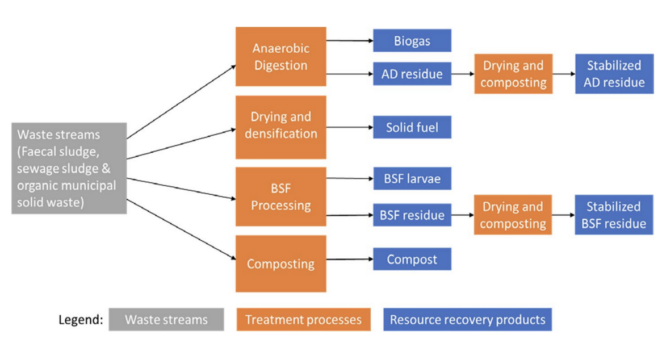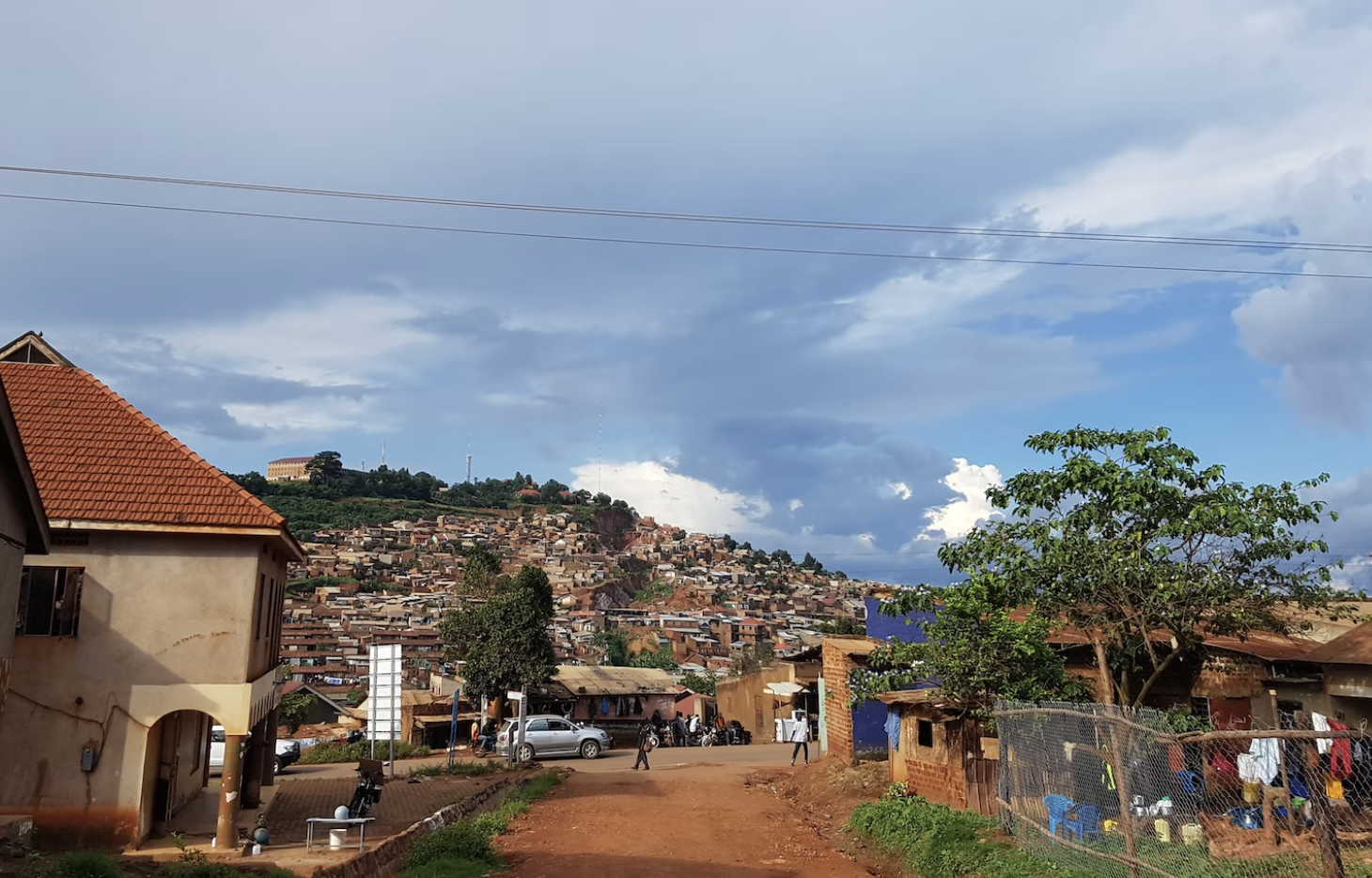Estimating the resource recovery potential of waste streams in Kampala, Uganda
This case study is part of the SEI Urban Toolbox for Liveable Cities which has been developed by the SEI Initiative on City Health and Wellbeing. The Urban Toolbox isa collection of tools, developed within SEI or in coordination with SEI, aimed at supporting planning and decision-making for improving the health, well-being and resilience of city residents and urban systems more broadly. It explores the resource recovery potential of waste in Kampala, and provides the basis for the REVAMP tool methodology.
Introduction
There is growing recognition of the potential environmental and socio-economic benefits of applying a circular approach to urban organic waste management through resource recovery. Decisions around planning and implementing circular urban waste systems require estimates of the quantity of resources available in waste streams and their potential market value.
However, studies assessing circular economy potential have so-far been conducted mostly in high-income countries, yet cities in low- and middle-income countries have different challenges when developing a circular economy. This study addresses this gap by estimating the resource recovery potential of organic waste streams in the context of low- and middle-income countries, illustrated with the case of Kampala, Uganda.The valorization potential is quantified based on the physical and chemical characteristics of the waste streams, using an approach that can be applied to other cities in low- and middle-income countries.
Please note, the REVAMP tool was developed based on the estimation methodology used in this study. Take some time to explore the tool in more detail and learn how it has since been applied in other contexts.
This article is an abridged version of the original text “The circular economy potential of urban organic waste streams in low- and middle-income countries” published in Environment, Development and Sustainability, 24, under theCC BY license in January 2022 © Ddiba et al. Please note that references have been removed.For more detail, research purposes, full references, and to quote text please use the paper available for download on the right.
Methodology
Case study context:
Kampala is the capital city of Uganda and has a resident population of 1.5 million people. Throughout the city, it is estimated that between 2000 and 2500 tonnes of solid waste are generated every day and only 40% to 65% of this is collected and dumped at the only authourized landfill in the city. The city has two large wastewater treatment plants (WWTPs), which also receive faecal sludge (FS) from on-site sanitation technologies via cesspool trucks, and two smaller plants based on stabilization pond systems.
Data collection and analysis:
A simplified material flow analysis approach is used to track the transformation of three waste streams: (1) faecal sludge, (2) sewage sludge and (3) organic solid waste, into the resource recovery products biogas, solid fuel, black soldier fly larvae, and compost.These options were selected on the basis of being presently the most mature and commonly used technologies for resource recovery in the context of low- and middle-income countries.

The material flow analysis approach depicts linear relationships between the physical and chemical quality parameters of the waste streams and the potential quantities of resource recovery products. Due to the scope of this study, for a given quantity of a waste stream, the quantity of resource recovery products that can be obtained only changes with variations in the quality of that waste stream. Potential revenues were calculated by multiplying the quantity of products and the estimated market prices.
Two scenarios were analyzed:
- Scenario 1 focused on the quantities of waste currently collected in the city
- Scenario 2 focused on the quantities of waste that could be collected if the waste collection infrastructure and logistics had a wider coverage and higher efficiency.
Key Findings
- Results indicated that with increased waste collection (Scenario 2), up to 62.5 million Nm3 of biogas could be obtained along with 56,000 tonnes of digestate, from anaerobic digestion (AD).
- If all the waste streams were instead dried and densified, up to 215,000 tonnes of solid fuel could be obtained.
- If all the waste streams were used for breeding black soldier fly (BSF) larvae, up to 24,000 tonnes of BSF larvae could be generated along with 56,000 tonnes of BSF residue.
- The potential annual revenues from these products could range from US$ 5.1 million from compost under Scenario 1 to US$ 77 million from AD under Scenario 2.
- Significant quantities of nutrient recovery products could be obtained in both scenarios from composting, the BSF process and AD.
- In both scenarios however, the quantities of nutrients that can be recovered from faecal sludge are significantly higher than the recoverable quantities from organic municipal solid waste and sewage sludge.
- More energy can be recovered in products from organic municipal solid waste than from faecal sludge or sewage sludge.
Overall, the findings indicate that even at current rates of waste collection, the three waste streams combined could annually yield 135,000 tonnes of solid fuel or 39.6 million Nm3 of biogas or 15,000 tonnes of black soldier fly larvae or 108,000 tonnes of compost; and revenues from the products could range from 5.1 million USD from compost to 47 million USD from biogas.
Implications for Sanitation, Waste and Resource Management
The results from this study show that there is great potential to generate value through resource recovery from organic waste streams in Kampala, especially from organic municipal solid waste which is currently collected in significantly higher quantities than faecal sludge or sewage sludge.
The insights revealed hereby could enable urban decision-makers to embark on a paradigm shift from waste treatment for disposal to waste treatment for resource recovery, and it could encourage investments in sustainable waste and resource management which could address the challenge of growing urban populations and the consequent energy, food and water demands.
From a policy and practice perspective, this analysis could be useful as a first step to enable city authorities and planners to understand the impact that resource recovery could have on resource consumption in a city. However, these discussions would need to consider potential tradeoffs between aspects such as nutrient recovery and energy recovery.
For cities like Kampala, the simplicity of the approach used in this study could also enable participatory dialogues with stakeholders from a wide range of sectors and backgrounds including sanitation, waste management, energy, agriculture, water, health and environment, among others.
It is also important to keep in mind that realizing the full potential for resource recovery would require measures to address the existing social, logistical, economic, policy and governance challenges that also hinder resource recovery.
Suggested Citation:
Ddiba, D., Andersson, K., Rosemarin, A., Schulte‑Herbrüggen, H. and Dickin, S. (2022). The circular economy potential of urban organic waste streams in low- and middle-income countries.Environment, Development and Sustainability,24, 1116–1144 (2022). https://doi.org/10.1007/s10668-021-01487-w

(0) Comments
There is no content